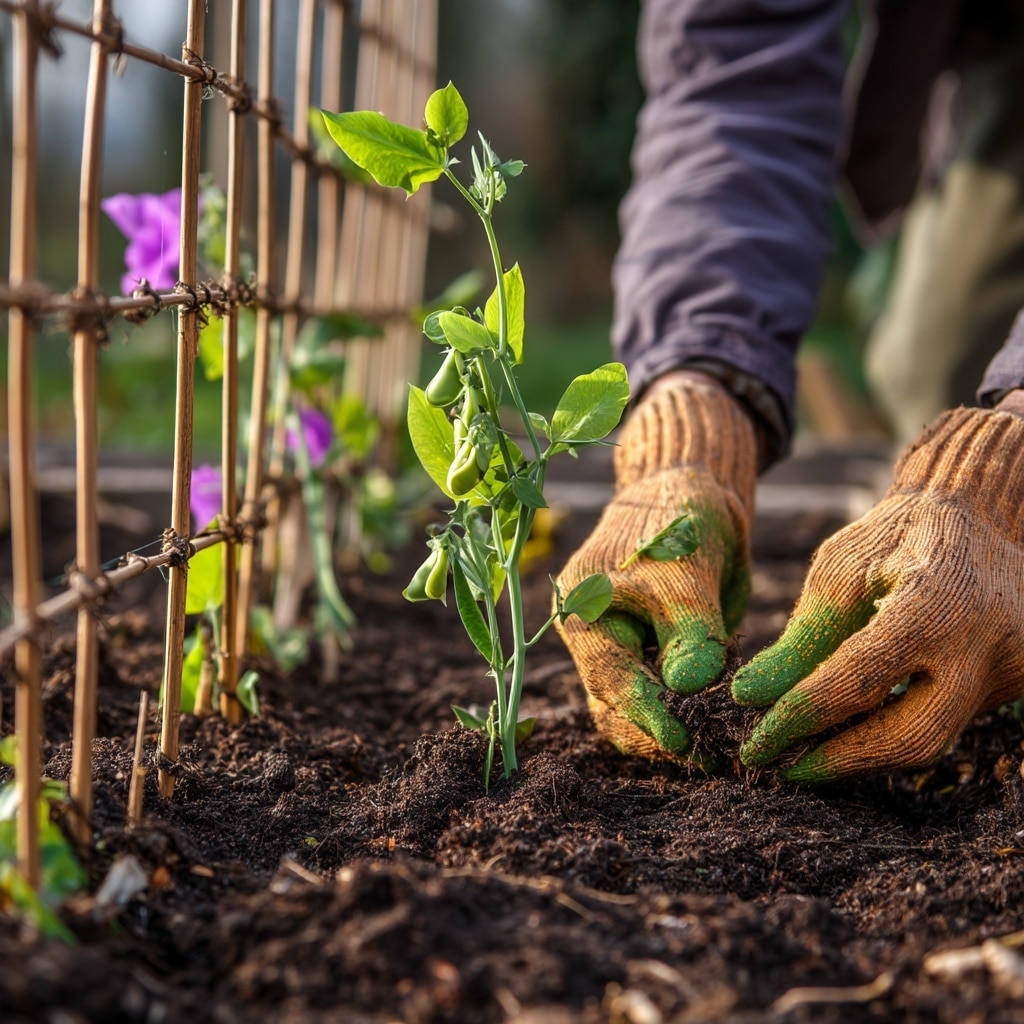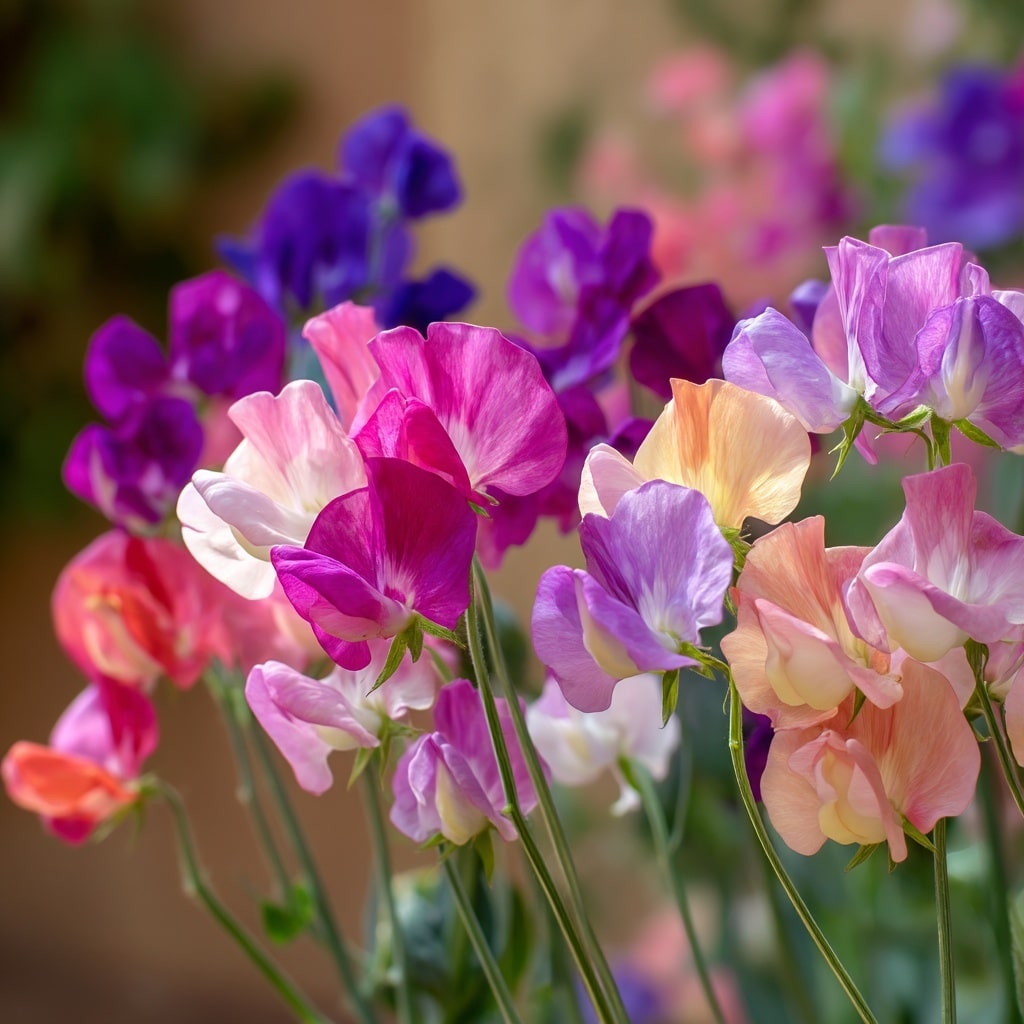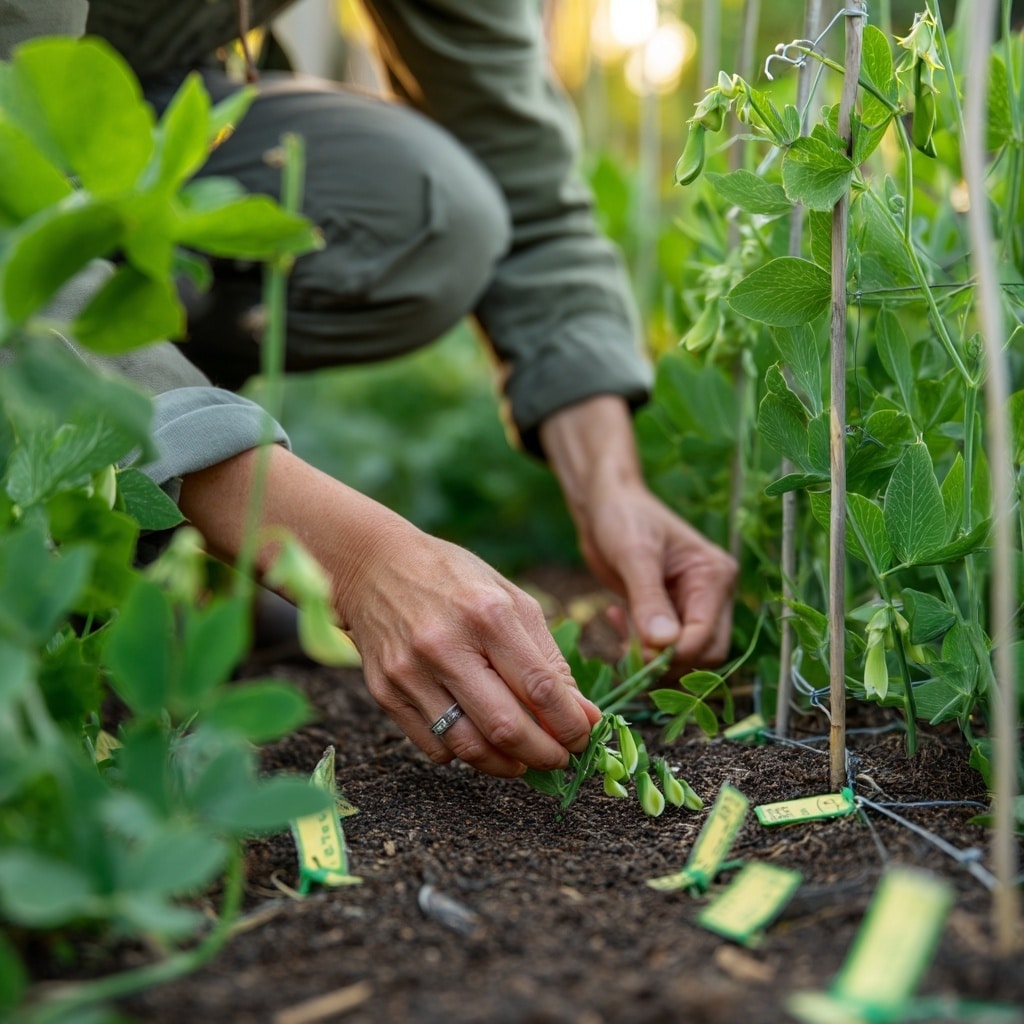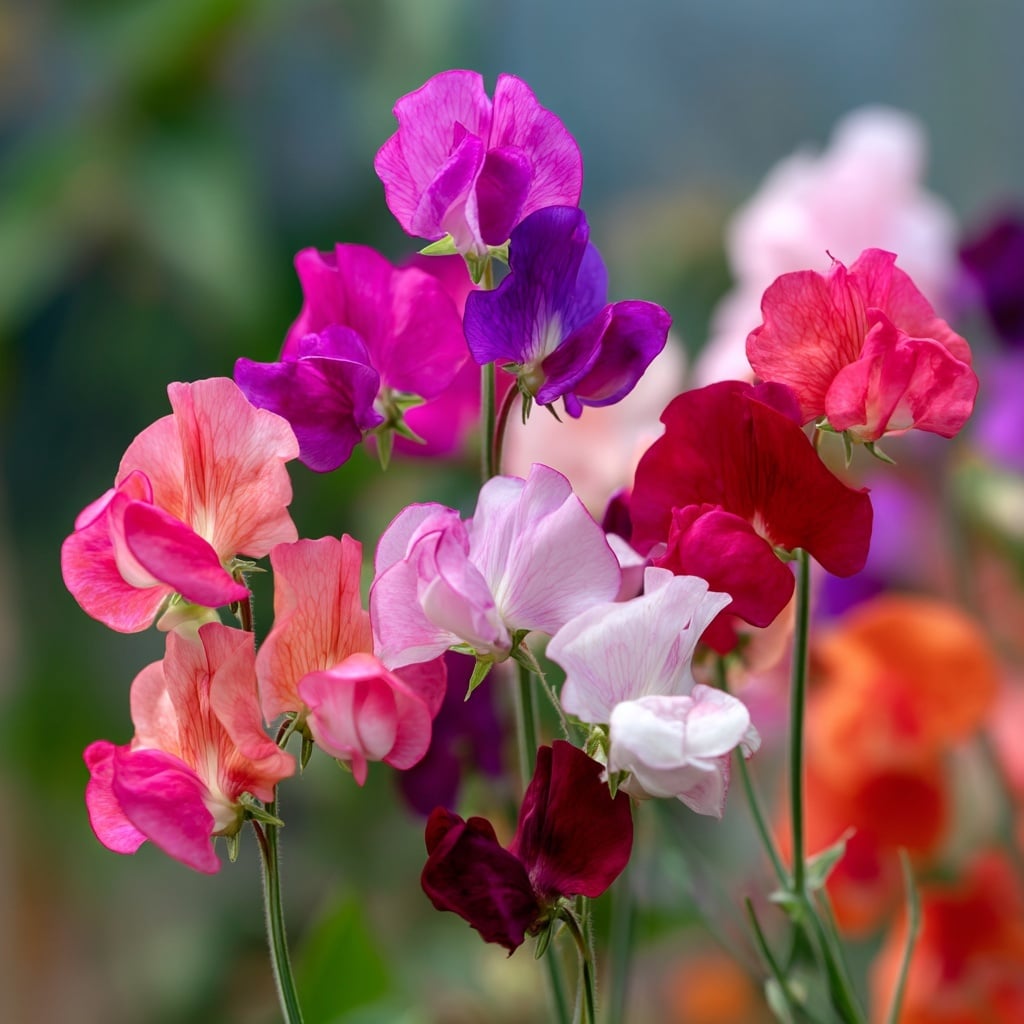Sweet pea flowers are among the most beloved blooms in cottage and cutting gardens, known for their irresistible fragrance and delicate, ruffled petals. These climbing annuals bring a classic, romantic charm to trellises, fences, and containers, offering a rainbow of colors that brighten any outdoor space.
Growing sweet pea flowers is both rewarding and simple once you understand their needs. With the right combination of soil, sunlight, and care, they’ll reward you with abundant blossoms that last from late spring through summer. Whether you’re a seasoned gardener or just starting, learning how to plant and care for sweet peas will help you enjoy continuous, fragrant blooms all season long.
Sweet peas prefer cool weather, rich soil, and consistent moisture—conditions that mimic their native Mediterranean climate. Once you master their rhythm, these charming vines can easily become the stars of your garden and your floral arrangements.
Table of Contents
Basics of Sweet Pea Flowers
Botanical Name: Lathyrus odoratus
Plant Type: Annual climbing vine
Sun Exposure: Full sun (at least 6 hours daily)
Soil Type: Rich, well-drained, and slightly alkaline
Mature Height: 4 to 8 feet depending on variety and support
Bloom Time: Late spring to mid-summer
Flower Colors: Pink, purple, red, blue, white, and bicolor blends
Fragrance: Strong, sweet scent—especially from traditional varieties
Sweet pea flowers thrive in cooler climates, making them perfect for early-season color. Their delicate blossoms bloom in clusters, creating a soft yet vibrant display ideal for garden borders or vertical spaces. Regular picking encourages new blooms, keeping your plants lush and lively throughout the growing season.
These flowers symbolize blissful pleasure and gratitude, making them a thoughtful choice for bouquets or gifts. Because of their climbing nature, providing a trellis or support from the start helps the vines grow tall and strong.
Planting Sweet Pea Flowers

Where to Plant
Choose a sunny location that receives at least six hours of direct sunlight daily. Sweet pea flowers love cool roots and warm blooms, so plant them where their roots can stay shaded—either by using mulch or low-growing companion plants like pansies or alyssum.
When to Plant
For best results, plant sweet pea seeds as soon as the soil can be worked in early spring. In mild or coastal climates, you can plant them in late fall for an early spring bloom. Sweet peas thrive in cooler temperatures, so early planting helps them establish strong roots before summer heat arrives.
How to Plant
- Soak seeds overnight in warm water to soften their hard outer shell.
- Sow seeds about 1 inch deep and 2 inches apart in well-drained soil.
- Add compost or aged manure before planting to boost soil fertility.
- For faster germination, cover the bed with a light frost cloth until seedlings appear.
Starting Indoors
If you live in an area with long, cold winters, start seeds indoors 4–6 weeks before the last frost. Use deep seed trays or biodegradable pots to accommodate their long taproots, then transplant outdoors once seedlings are 3–4 inches tall.
Spacing
Provide 6–8 inches of space between plants to ensure good airflow and prevent mildew.
Tip
Support your sweet pea flowers early. Install a trellis, bamboo poles, or netting before planting to avoid disturbing their roots later. As they grow, gently guide the vines upward for a beautiful vertical display.
Sweet Pea Care

Once your sweet pea flowers are established, a little consistent care keeps them blooming beautifully for months. These climbers thrive when their basic needs—moisture, nutrients, and support—are met throughout the season.
Watering
Sweet peas love consistent moisture, especially during dry or warm spells. Keep the soil evenly moist but never soggy. Aim for deep watering two to three times a week, depending on your climate. Adding a layer of mulch helps retain soil moisture and keeps roots cool.
Fertilizer and Soil Health
Feed your plants every 2–3 weeks with a balanced, water-soluble fertilizer (like 10-10-10) or use an organic compost tea. Avoid overfeeding with nitrogen-heavy fertilizers, as this can lead to leafy growth with fewer blooms.
Pruning and Deadheading
To encourage continuous flowering, deadhead spent blooms regularly. Removing faded flowers prevents seed formation, which signals the plant to keep producing new buds. Pinching the growing tips early on can also promote bushier growth.
Pests and Diseases
Sweet pea flowers are mostly trouble-free, but keep an eye out for:
- Aphids: Spray with insecticidal soap or a water-dish soap solution.
- Powdery mildew: Improve air circulation and water only at the base of plants.
- Snails and slugs: Use barriers or organic slug bait around young plants.
Healthy, well-spaced plants grown in full sun are far less prone to pest problems.
Varieties of Sweet Peas

Sweet pea flowers come in several stunning varieties, each offering unique colors, forms, and bloom times. Choosing the right type for your garden can make a big difference in both appearance and fragrance.
Spencer Varieties
These are the most popular and recognizable sweet peas. Spencer types feature large, ruffled blooms on long, sturdy stems—ideal for cutting gardens and floral arrangements. They bloom slightly later than other types but reward you with elegant, showy flowers in a wide range of colors.
Grandiflora Varieties
Known for their intense fragrance and smaller but prolific blooms, Grandifloras are the true old-fashioned sweet peas. They tend to handle warmer conditions better and are perfect if scent is your main priority.
Early Multiflora (Cuthbertson Type)
These early bloomers thrive in cooler climates and are great for gardeners who want flowers early in the season. They have multiple blossoms per stem and a strong, pleasant scent.
Dwarf and Semi-Dwarf Varieties
If you have limited space, dwarf sweet peas are a perfect choice. Growing only 8–18 inches tall, these compact varieties fit beautifully in containers, hanging baskets, or as colorful borders along walkways.
Each type of sweet pea flower can bring a different character to your garden—from towering, trellised displays to low-growing mounds of color and scent.
Frequently Asked Questions About Sweet Pea Flowers

Are sweet peas annuals or perennials?
Most garden sweet pea flowers (Lathyrus odoratus) are annuals, meaning they complete their life cycle in one growing season. However, there are perennial relatives like Lathyrus latifolius (everlasting pea) that return year after year but lack the signature fragrance of the annual varieties.
What’s the difference between sweet peas and everlasting peas?
The key difference lies in fragrance and longevity. Sweet peas are fragrant annuals, while everlasting peas are hardy perennials with little or no scent. The latter are great for long-term coverage but won’t fill your garden with the same aroma.
Are sweet pea plants poisonous?
Yes — all parts of the sweet pea plant, especially the seeds, contain toxic compounds that can cause nausea or other symptoms if ingested. Keep them away from small children and pets.
How do I harvest sweet pea flowers for longer vase life?
Cut blooms early in the morning when they’re just starting to open. Use sharp shears and place stems immediately in cool water. Change the water daily and trim the stems every few days to extend freshness. Regular harvesting also encourages more blooms.
Why are my sweet pea plants dropping their buds?
Bud drop is often caused by heat stress or inconsistent watering. Sweet peas prefer cooler conditions, so keep them well-watered and shaded during hot afternoons to prevent stress.
What should I do after sweet peas finish flowering?
Once blooming slows, you can allow the pods to mature and collect seeds for next year’s planting. Afterward, cut down the vines and compost them. Adding organic matter to the soil helps prepare the bed for the next growing season.
Conclusion

Growing sweet pea flowers is one of the most rewarding joys of gardening. Their sweet fragrance, delicate texture, and endless color combinations can transform any outdoor space into a charming floral retreat. With the right soil, sunlight, and care, these annual climbers will fill your garden and home with beauty from spring through summer.
Remember to plant them early, keep their roots cool and moist, and provide support for their tall, vining growth. Regular picking and deadheading are the secret to nonstop blooms and strong plants. Whether grown for cutting or to enhance your garden’s vertical interest, sweet pea flowers will never disappoint.





